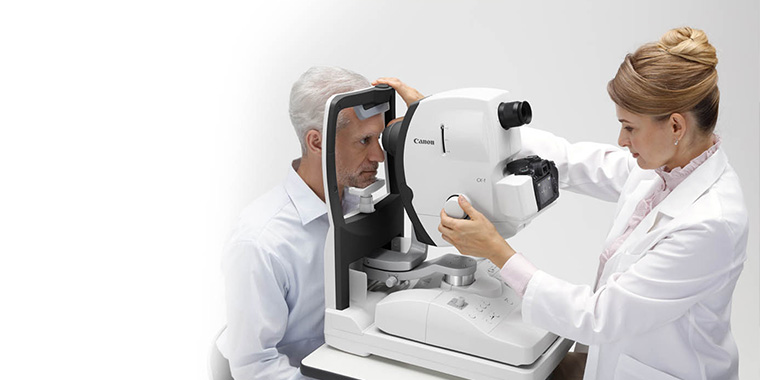Comprehensive Cataract Care Service: Expertise You Can Count On
Comprehensive Cataract Care Service: Expertise You Can Count On
Blog Article
Whatever You Need to Understand About the current Advancements in Glaucoma Treatment and Eyecare
In the realm of ocular health, developments in the treatment and administration of glaucoma have actually been gradually progressing, leading the method for improved individual treatment and outcomes. From advanced diagnostic tools that provide unprecedented insights into the illness progression to ingenious surgical techniques that promise better accuracy and quicker healing times, the landscape of glaucoma treatment is going through a significant change.
Advanced Diagnostic Technologies
Advanced diagnostic modern technologies play a crucial duty in the very early detection and monitoring of glaucoma, allowing for extra efficient treatment and administration of the problem. Among these modern technologies, optical comprehensibility tomography (OCT) stands out as a non-invasive imaging technique that offers detailed cross-sectional images of the retina, optic nerve head, and retinal nerve fiber layer. This high-resolution imaging helps medical professionals analyze architectural changes in the eye brought on by glaucoma, allowing them to intervene without delay.
Furthermore, visual area testing, such as automated perimetry, is an additional necessary diagnostic device for examining glaucoma-related vision loss - hearing service near me. This examination determines the level of sensitivity of an individual's visual area, assisting to spot any kind of areas of vision loss or distortion. By combining OCT imaging with aesthetic field testing, doctor can get an extensive understanding of the condition's progression and dressmaker treatment prepares as necessary
Minimally Invasive Surgery
In the realm of glaucoma administration, the emphasis shifts in the direction of minimally intrusive surgical treatments as a proactive method to resolve the progression of the problem adhering to sophisticated analysis evaluations such as optical comprehensibility tomography (OCT) and visual area testing. Minimally intrusive glaucoma surgeries (MIGS) have actually acquired appeal as a result of their effectiveness in decreasing intraocular stress while reducing the dangers and recuperation times related to conventional glaucoma surgical procedures. These procedures are usually executed through small cuts, commonly together with cataract surgery, making them less invasive and much more comfy for individuals.
Some usual MIGS treatments consist of trabecular micro-bypass stents, which improve the outflow of aqueous humor, and micro-sized implants that improve drain in the eye. In addition, laser treatments such as discerning laser trabeculoplasty (SLT) offer a non-invasive choice for reducing intraocular stress. By including these minimally intrusive strategies right into glaucoma management, ophthalmologists can offer clients with efficient treatment choices that focus on security and fast recuperation, inevitably boosting lasting end results for people with glaucoma.
Unique Medication Therapies
Emerging drug therapies present promising opportunities for enhancing the pharmacological management of glaucoma, providing ingenious techniques to deal with intraocular stress control and disease development. One unique medication treatment that has garnered focus is Rho kinase preventions.

Telemedicine and Remote Monitoring
With the advancement of novel medicine therapies broadening the therapy landscape for glaucoma, the integration of telemedicine and remote surveillance emerges as an essential part in improving individual care and illness monitoring. Telemedicine allows eye care specialists to remotely evaluate people, provide examinations, and display disease progression without the demand for in-person visits. This is especially valuable for glaucoma patients who need constant surveillance to stop vision loss. Remote tracking modern technologies make it possible for patients to determine their intraocular pressure or aesthetic area in the house, allowing for timely modifications to treatment plans. By using telemedicine and remote surveillance, medical care service providers can improve access to care, enhance individual conformity, and find possible concerns early, bring about better outcomes for individuals with glaucoma. Additionally, these technologies offer convenience for patients, especially those in web link remote areas or with mobility limitations, by reducing the need for constant facility brows through. Welcoming telemedicine and remote surveillance in glaucoma monitoring stands for a considerable development in optimizing patient treatment and therapy efficiency.
Personalized Therapy Approaches
Advancing past traditional one-size-fits-all techniques, tailored treatment methods customized to individual client features are transforming the management of glaucoma. By tailoring treatment strategies based on elements such as age, condition extent, way of life, and various other health and wellness problems, eye doctors can optimize results and enhance client contentment.
Personalized therapy methods in glaucoma entail an extensive analysis of each person's unique profile. This may include genetic testing to determine certain danger aspects, imaging strategies to analyze architectural adjustments in the eye, and useful examinations to evaluate visual field loss. By incorporating these personalized understandings, medical care service providers can develop targeted treatments that resolve the underlying root causes of glaucoma progression for each and every person.
Additionally, improvements in innovation have actually made it possible for the development of customized treatment options such as minimally intrusive glaucoma surgeries (MIGS) tailored to the client's certain requirements - refractive surgeries in al. These procedures offer efficient intraocular pressure control with less issues, improving the overall top quality of look after glaucoma clients. Embracing personalized therapy methods marks a substantial paradigm shift in glaucoma monitoring, highlighting accuracy medication to deliver customized options for much better individual results
Verdict
Finally, the most current innovations in glaucoma treatment and eyecare include progressed diagnostic innovations, minimally invasive surgeries, unique drug therapies, telemedicine and remote tracking, and customized therapy methods. These innovations are reinventing directory the way we identify and deal with glaucoma, offering more tailored and efficient alternatives for clients. By remaining current with these developments, medical care professionals can offer far better care and enhance end results for individuals additional hints with glaucoma.

With the advancement of novel medicine therapies broadening the therapy landscape for glaucoma, the integration of telemedicine and remote tracking arises as a critical element in boosting client treatment and condition management. glaucoma service near me. Embracing telemedicine and remote tracking in glaucoma monitoring stands for a significant innovation in maximizing individual treatment and treatment efficacy
In conclusion, the latest technologies in glaucoma therapy and eyecare include advanced analysis innovations, minimally invasive medical treatments, novel drug therapies, telemedicine and remote tracking, and individualized therapy strategies.
Report this page